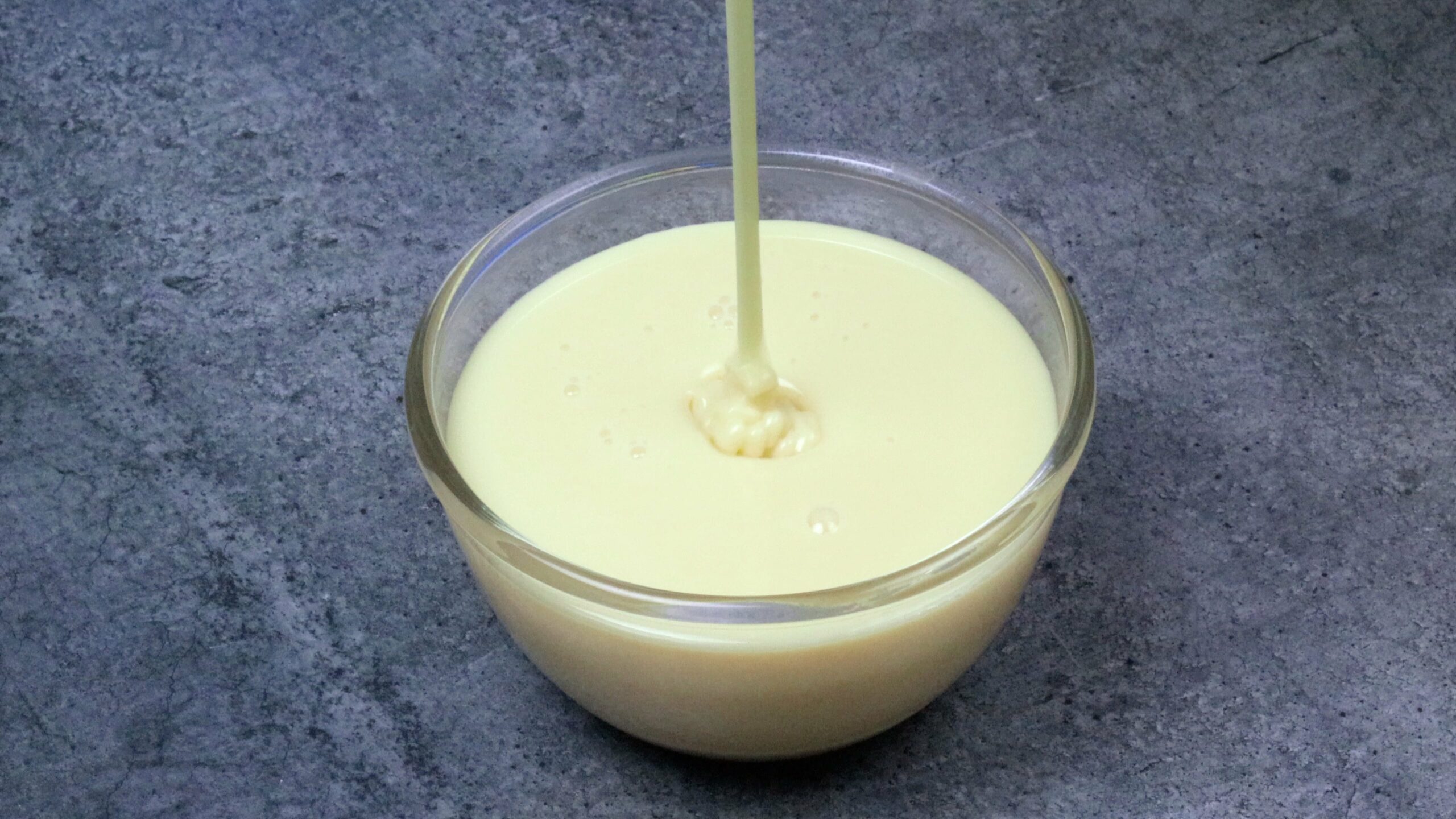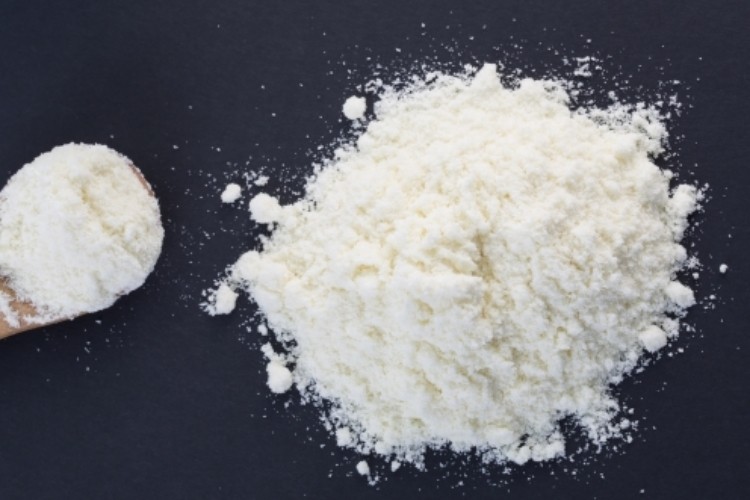Table of Contents
What is the ratio of milk powder to water?
For 1 cup of water, use xbc cup of milk powder. To get your desired amount of milk, simply multiply the number of cups by xbc. What is this? A quick tip for making large quantities of milk, mix half the water with the full amount of milk powder, then add the rest of the water to fill up.
How do you make 1 Litre milk from powder?
To make 1 litre Add 1 1/3 cups (140g) of Australian Dairies Whole Milk Instant Milk Powder to 2 cups (500mL) of hot or cold water.Stir until dissolved.Add more water to make up to 1L
What is the ratio of milk powder to milk?
Dry milk usually reconstitutes at a ratio of 1 to 4 u2014 that is, 1 cup of milk powder to four cups of water, or 1/4-cup of milk powder to 1 cup of milk.
How much water do you add to whole milk powder?
To turn into milk: Slowly combine about 1/3 cup of milk powder with 1 cup of cold water. It’s best to add just a tiny bit of water, stir the water and powder together into a paste, and then add the rest of the water, stirring continuously.
How much water do I add to milk powder?
Slowly combine about 1/3 cup of milk powder with 1 cup of cold water. It’s best to add just a tiny bit of water, stir the water and powder together into a paste, and then add the rest of the water, stirring continuously.
How do you make 1 Litre of powdered milk?
As a general rule of thumb, 100 g (3 oz weight) of powdered milk will make up 1 litre (1 US quart / 32 oz) of milk, unless a manufacturer provides different directions.
How much water do you add to skimmed milk powder?
This is the milk powder to keep on hand for cooking, especially if you have a bread machine, as it is called for by most bread machine recipes. To reconstitute, use 4 tablespoons of the powder to 250 ml (1 cup) of water. The water can be cold or tap temperature.
What is the ratio of powdered milk to liquid milk?
Well, they made it easy for you. Dry milk usually reconstitutes at a ratio of 1 to 4 u2014 that is, 1 cup of milk powder to four cups of water, or 1/4-cup of milk powder to 1 cup of milk.
How much milk does 1kg of powder make?
7 Litres
How do you make milk from powdered milk?
To turn into milk: Slowly combine about 1/3 cup of milk powder with 1 cup of cold water. It’s best to add just a tiny bit of water, stir the water and powder together into a paste, and then add the rest of the water, stirring continuously.
How much milk is equivalent to milk powder?
For every 1/4 cup (32 grams) of milk powder, substitute 1 cup (240 mL) of regular milk. You’ll also want to reduce the original amount of water called for in the recipe by 1 cup (240 mL). Whole fat, reduced fat, and nonfat milk can all be used in place of milk powder.
How much milk powder makes a Litre of milk?

To make 1 litre Add 1 1/3 cups (140g) of Australian Dairies Whole Milk Instant Milk Powder to 2 cups (500mL) of hot or cold water.Stir until dissolved.Add more water to make up to 1L
How much milk we get from 1kg milk powder?
Needed. 1 liter full-fat fresh milk yields about 150g of powdered milk.
How do you mix whole milk powder with water?
Slowly combine about 1/3 cup of milk powder with 1 cup of cold water. It’s best to add just a tiny bit of water, stir the water and powder together into a paste, and then add the rest of the water, stirring continuously.
How do you dilute whole milk powder?
For 1 cup of water, use xbc cup of milk powder. To get your desired amount of milk, simply multiply the number of cups by xbc. What is this? A quick tip for making large quantities of milk, mix half the water with the full amount of milk powder, then add the rest of the water to fill up
How do you use dry whole milk powder?
To make fluid milk from powdered milk, just mix the powder with water according to package directions. Then you can add it to recipes as fluid milk.
How do you mix dry milk powder?
As a general rule of thumb, 100 g (3 oz weight) of powdered milk will make up 1 litre (1 US quart / 32 oz) of milk, unless a manufacturer provides different directions.
How do you mix whole milk powder?
to reconstitute, always add milk powder to cold water. for smoothness and flavour, mix at night for use the next day. for 1 glass of milk, mix 3 tablespoons (30 g) of powder with 1 cup (250 ml) of cold water.for 1 litre (4 cups) of milk, mix 13 tablespoons (125 g) of powder with 1 litre (4 cups) of cold water
How do you make 500mL milk with milk powder?
Reconstitute the dry milk. Mix 315mL (1u2153 cups) instant dry milk into 500mL (2 cups) cold water until dissolved.Add in another 500 mL (2 cups) water and stir until well mixed.Let stand a few minutes and stir again
How many Litres does 1kg of milk powder make?
Needed. 1 liter full-fat fresh milk yields about 150g of powdered milk.
How do you make powdered milk step by step?
Available in 1kg pack u2013 Equivalent of 7 Litres of Milk.
How do you mix skimmed milk powder?
To make 1 cup (700 ml) for drinking, add 3 tablespoons (45 ml) of skimmed milk powder to 1 cup (700 ml) of water. This should be mixed thoroughly before drinking, stirring or shaking vigorously. Making it well ahead of time is preferred, giving the powder more time to dissolve thoroughly.
Can I add water to make skim milk?
For 1 cup of water, use xbc cup of milk powder. To get your desired amount of milk, simply multiply the number of cups by xbc. What is this? A quick tip for making large quantities of milk, mix half the water with the full amount of milk powder, then add the rest of the water to fill up.
How do I substitute liquid milk for powdered milk?
Regular liquid milk can be substituted for milk powder in recipes that also include added water. One cup (240 mL) of regular milk can be used for every 1/4 cup (32 grams) of milk powder
What is the correct ratio of powdered milk to water?
With most brands of nonfat powdered milk, the ratio is approximately 4 Tbsp.of powdered milk to 1 cup of water (or 1 cup of powdered milk per quart of water). Ratios can vary drastically between brands, especially if you are using whole-fat powdered milk or non-dairy milk powder.


